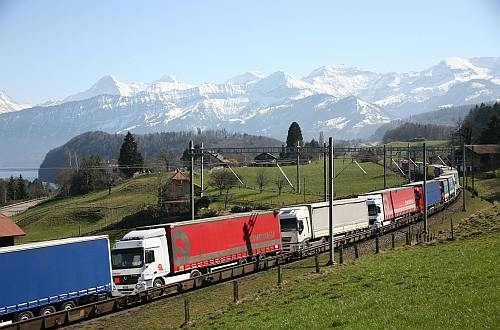The company transported 100,500 lorries on its main service between Freiburg im Breisgau, Germany, and Novara, Italy, the first time this has exceeded 100,000 units in a year. It also carried 10,000 lorries between Basle and Lugano in Switzerland. Overall capacity utilisation on the two routes, which use the Lötschberg/Simplon axis, was 85%.
The result was achieved despite Ralpin increasing prices following the removal of the Swiss franc-euro price peg a year ago and the low cost of diesel. And with Ralpin lengthening its trains from 21 to 22 wagons from this month following successful cooperation with Italian infrastructure operator RFI to modify its regulations, the company looks set to continue its growth.
In addition, in October 2015 Ralpin started modification work at its Freiburg terminal, which currently handles around 60 trains per week, to allow trains to load from the north. As well as using its own funds, Ralpin secured support from the Swiss government for the project and once completed it will prevent trains from making a time-consuming loop in the Basle area, reducing traction costs.
In the long-term, capacity is set to increase following the completion in around 10 years of the 4m corridor between Germany and Italy via the Gotthard/Ceneri axis. This will enable Ralpin to operate 750m-long trains carrying up to 34 trucks.

